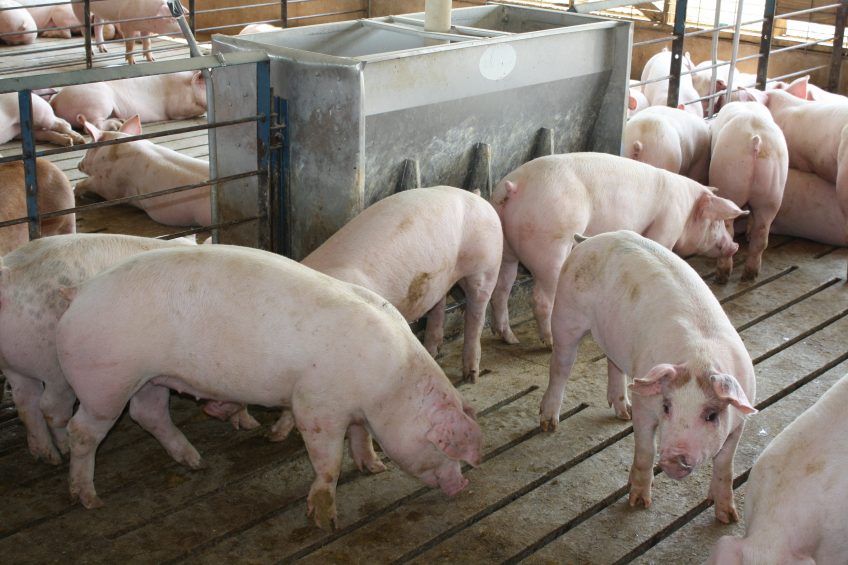Where is fibre fermented in the pig digestive tract?

US scientists have been able to accurately pinpoint the location within the pig digestive tract where fibre is fermented.
Researchers from the University of Illinois carried out the research, as fibre is increasingly being added to pig diets, but digestion of fibre in pigs is inefficient and relatively poorly understood. The article was published in the Journal of Animal Science.
In a press publication by the university, one of the authors, Prof Hans Stein explained, “We’re trying to figure out the specifics of fibre fermentation in pigs and what can we potentially do to increase it.” Prof Stein is professor in the university’s Department of Animal Sciences and the Division of Nutritional Sciences.
Experimental pig diets
Prof Stein’s research group formulated 4 experimental diets, including a standard corn-soybean meal diet as a control. Different fibre sources replaced 30% of the control diet in the remaining 3 diets: distillers dried grains with solubles (DDGS), wheat middlings, and soybean hulls.
The researchers placed 2 cannulas in each of 8 barrows of about 37 kg, which allowed them to collect digesta from the end of the small intestine and from the colon, just after the caecum. Faecal samples were also collected from each pig. Values were calculated for apparent ileal digestibility (AID), apparent caecal digestibility (ACD), and apparent total tract digestibility (ATTD).
Quantifying disappearance of nutrients
Prof Stein explained in the press release: “This allowed us to quantify disappearance of nutrients and energy through fermentation at every point along the digestive tract. We know there’s fermentation in the caecum, but we didn’t know how much there was. And we also were able to quantify what happens in the colon.”
The insoluble fibre in wheat middlings was fermented more readily than in soybean hulls or DDGS, suggesting it may be the best fibre source of the 3. For the soluble fibre fraction, there were no differences among the diets.
Sites of fermentation for fibres
The site of fermentation for soluble fibre was either in the small intestine or in the caecum, whereas for insoluble fibre, fermentation occurred in the colon.
“This is the first study to determine the different places in the pig digestive tract where fibre is fermented. We will use this information to conduct more research and determine if we can solubilise more fibre and therefore get more energy out of it early in the digestive tract,” Prof Stein said. “We can potentially target enzymes or other additives to help microbes ferment more fibre.”
The article in the Journal of Animal Science was authored by Neil Jaworski and Hans H. Stein, University of Illinois, United States.











